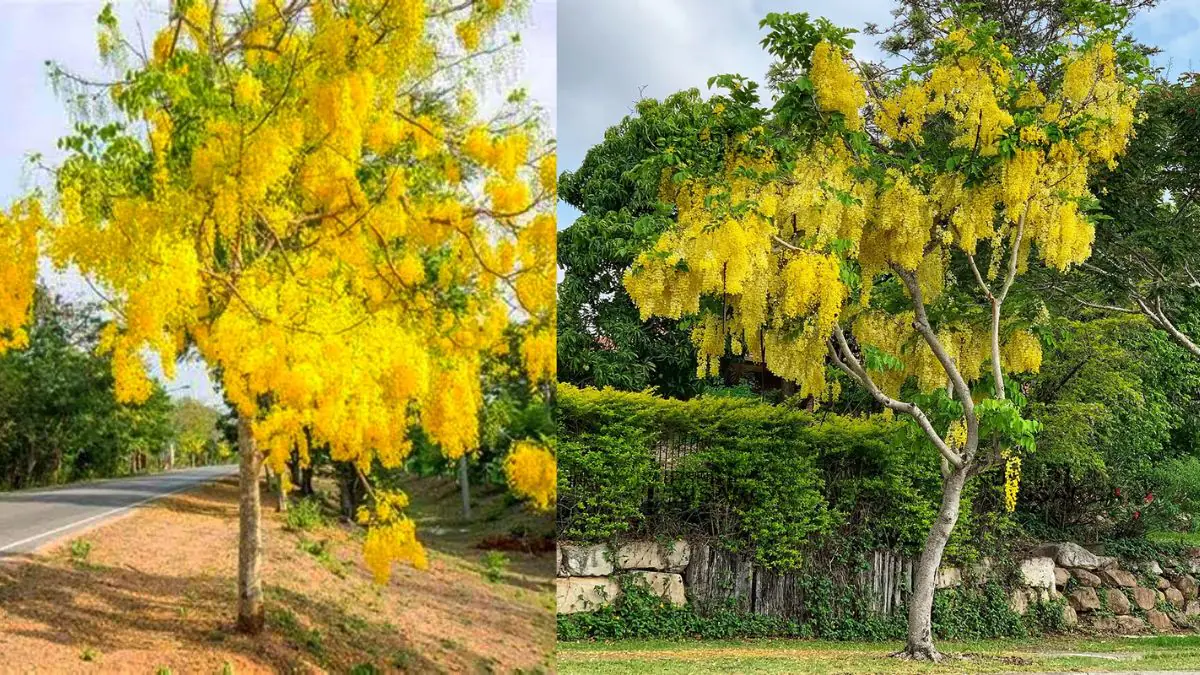Amaltas Plant Online The Amaltas plant, also known as Cassia Fistula or Golden Shower Tree, is a beautiful and versatile plant that holds both ornamental and medicinal value. With its vibrant yellow flowers and elongated seed pods, the Amaltas plant adds a touch of elegance to any garden or indoor space.
In this article, we will explore the various aspects of the Amaltas plant, including its history, benefits, cultivation techniques, and creative uses. Whether you are a seasoned gardener looking to expand your plant collection or a nature enthusiast interested in the unique properties of this tree, this guide will provide you with valuable insights into the world of the Amaltas plant.
Introduction to the Amaltas Plant Online
What is the Amaltas Plant?
The Amaltas Plant, also known as Cassia Fistula or Indian Laburnum, is a flowering tree native to South Asia. It is prized for its vibrant yellow flowers and distinctive long pods that hang like tassels.
Historical Significance of the Amaltas Plant
Amaltas Plant Online The Amaltas Plant has a rich historical significance in various cultures. In Ayurvedic medicine, it has been used for centuries to treat a range of ailments. The tree’s beauty and symbolism have also made it a part of folklore and traditional ceremonies in many regions.
Benefits and Uses of the Amaltas Plant
Medicinal Properties of the Amaltas Plant
Amaltas Plant Online The Amaltas Plant is known for its purgative and laxative properties, making it a popular remedy for constipation and digestive issues. It also has antioxidant and anti-inflammatory qualities that contribute to its medicinal uses.
Traditional and Culinary Uses of the Amaltas Plant
Amaltas Plant Online Beyond its medicinal properties, the Amaltas Plant has been used in traditional remedies for skin ailments and even as a natural dye. In some cultures, the flowers and seeds are also used in culinary preparations.
Growing and Caring for the Amaltas Plant
Optimal Growing Conditions for Amaltas Plants
Amaltas Plant Online Amaltas Plants thrive in warm climates with well-drained soil and plenty of sunlight. They are relatively low-maintenance once established but benefit from occasional pruning to maintain shape and promote flowering.
Watering and Fertilizing Guidelines
Amaltas Plant Online Water the Amaltas Plant regularly, especially during dry spells, but avoid waterlogging the soil. A balanced fertilizer in the growing season can help promote healthy growth and flowering.
Pruning and Propagation Techniques
Amaltas Plant Online Pruning helps control the size and shape of the tree while also encouraging flower production. Propagation is typically done through seeds or cuttings, with seeds requiring scarification for better germination rates.
Buying Amaltas Plants Online

Choosing a Reputable Online Nursery
Amaltas Plant Online When buying Amaltas Plants online, look for nurseries with positive reviews and a good reputation for quality plants and reliable shipping. Check for certifications or guarantees for healthy plants.
Factors to Consider When Buying Amaltas Plants Online
Amaltas Plant Online Consider factors like plant size, health, and the nursery’s location when buying Amaltas Plants online. Ensure that the plant will be well-packed for shipping to prevent damage during transit.
Tips for Successful Cultivation of Amaltas Plants
Seasonal Care Recommendations
Amaltas Plant Online To keep your Amaltas plants thriving, make sure to provide them with ample sunlight and well-draining soil during the growing season. Water regularly but avoid overwatering, especially during the dormant winter months.
Pest and Disease Management
Amaltas Plant Online Keep an eye out for common pests like aphids and caterpillars that can infest Amaltas plants. Use neem oil or insecticidal soap to combat these unwelcome visitors. If disease strikes, treat with a fungicide according to package instructions.
Common Issues and Troubleshooting for Amaltas Plants
Identifying and Addressing Pest Infestations
Amaltas Plant Online If you notice yellowing leaves, distorted growth, or sticky residues on your Amaltas plants, you may have a pest problem. Identify the culprit and take appropriate action to eliminate them. Regularly inspect your plants to catch infestations early and prevent widespread damage.
Dealing with Disease and Nutrient Deficiencies
Wilting, discolored, or stunted growth can indicate disease or nutrient deficiencies in your Amaltas plants. Treat deficiencies with appropriate fertilizers and address diseases promptly with targeted treatments to restore your plants’ health.
Creative Uses and Decor Ideas with Amaltas Plants
Incorporating Amaltas Plants in Indoor Spaces
Bring the beauty of Amaltas plants indoors by placing them in well-lit areas with indirect sunlight. Their vibrant yellow flowers and delicate leaves can brighten up any room. Consider using decorative pots or hanging planters to showcase these lovely plants in your living or work space.
DIY Projects and Design Inspirations featuring Amaltas Plants
Get creative with your Amaltas plants by incorporating them into DIY projects and design schemes. Create a stunning centerpiece using Amaltas blooms, or design a vertical garden using multiple plants for a lush and eye-catching display. Let your imagination run wild and explore the endless possibilities of decorating with these versatile plants.
In conclusion, the Amaltas plant is a remarkable addition to any garden or living space, offering beauty, versatility, and potential health benefits. By understanding how to care for and cultivate this plant, as well as exploring its various uses, you can fully appreciate and enjoy all that the Amaltas plant has to offer. Whether you choose to grow it for its aesthetic appeal, its medicinal properties, or simply as a unique conversation piece, the Amaltas plant is sure to bring joy and charm to your surroundings. So, why not consider adding this lovely tree to your collection and let its golden blooms brighten your days ahead.
FAQs
Can I grow an Amaltas plant indoors?
While Amaltas (Indian Laburnum) is primarily an outdoor tree due to its size and need for ample sunlight, you can grow it indoors during its early stages in a large pot near a sunny window. Once it grows larger, it’s best to transfer it to an outdoor space for proper growth and blooming.
How often should I water my Amaltas plant?
Amaltas plants require regular watering, especially during their initial growth phase. Water them once or twice a week, ensuring the soil remains slightly moist but not waterlogged. During the rainy season, reduce watering to prevent overhydration.
Are there any specific pests or diseases I should watch out for when growing an Amaltas plant?
Yes, Amaltas plants can be susceptible to aphids, mealybugs, and fungal infections. Regularly inspect the leaves and stems for signs of pests or discoloration. Use organic insecticides or neem oil to manage pest infestations and ensure proper air circulation to prevent fungal diseases.
What are some creative ways to incorporate Amaltas plants into my home decor?
Place young Amaltas plants in decorative pots near large windows or balconies.
Use Amaltas flowers as fresh indoor decor when they bloom, arranging them in vases.
Create a small outdoor seating area under a mature Amaltas tree to enjoy its vibrant yellow blossoms.
Incorporate potted Amaltas plants into a green-themed patio or terrace garden for a lively, natural look.

